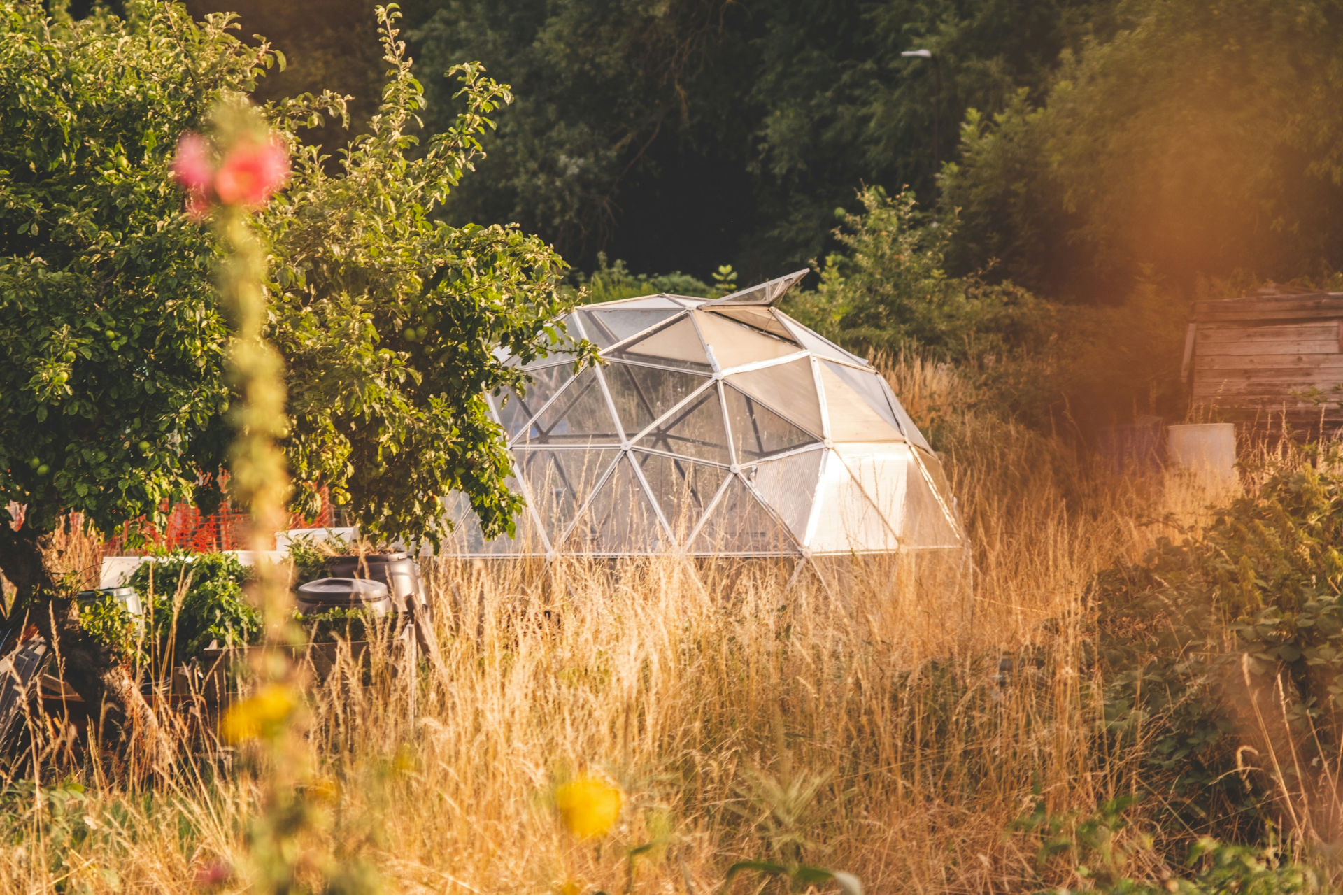
Easy ways to grow your own food
An easy step by step guide
Growing your own food is a bit like having a magic supermarket that’s only open for you. It can save you money, reduce food waste and lower your carbon emissions. Learn to grow your own food with these simple tips, whatever space you have available.
Picture this: you’re strolling through your garden (or leaning over your window box), harvesting fresh herbs and ripe tomatoes. Sounds idyllic, right? Now, imagine doing this while simultaneously helping the planet. It’s easier to grow your own food than you might think and has numerous benefits, even if you have minimal outdoor space and experience. Our guide shows you how.
Benefits of growing your own food
Rising food costs and concern for the environment have inspired many more people to explore how to be self-sufficient and grow their own food. The great thing is that you don’t need much to get started, and the rewards can be considerable. Here are some other benefits of growing your own food.
Reduces food waste
You harvest only what you need. This helps reduce food waste, which is a massive problem for the planet. Say goodbye to sad, wilted veggies at the back of your fridge. In fact, you can make your own compost from vegetable scraps and leftovers, reducing your food waste even further.
Reduces your carbon footprint
Homegrown food eliminates the need for transportation, packaging and refrigeration. This significantly cuts down on carbon emissions. You also control what goes into your soil, avoiding fertilizers and pesticides that harm the environment.
Growing your own crops saves money
Seeds and seedlings are cheaper than buying fresh produce from the supermarket. Over time, growing your own food could lead to substantial savings. You may also find yourself at the store less often, saving time and money on those impulse buys you don’t need.
Your home-grown crops attract pollinators
Pollinators are essential for the growth of many plants, including those that produce food. We often think of bees when we think of pollinators, but a variety of insects, butterflies and birds are all important for pollination. By growing a variety of fruits, vegetables and flowers, you can create a welcoming habitat for these creatures.
Other tips for attracting pollinators include growing plants that flower at different times of the year to provide a continuous source of food. Try and incorporate native species into your garden as they are more likely to attract local pollinators. These species are also adapted to the local climate and have a better chance of surviving.
Helps capture carbon in soil
Growing your own food can play a role in mitigating climate change. That’s because it captures carbon dioxide (CO2) from the atmosphere and stores it in the soil. Healthy soils can sequester large amounts of carbon. Plants also absorb CO2 from the air during photosynthesis and transfer it to the soil through their roots.
Wondering whether your little window box can really make a difference? Every plant counts, according to these guerrilla gardeners who are on a mission to turn cities into green oases.
Benefits mental and physical well-being
Gardening is not only beneficial for the environment but also for your health. Getting your hands dirty can boost both mental and physical well-being.
That’s because gardening involves various physical activities such as digging, planting and watering. It is also a great stress reliever. After a long day, there’s nothing quite like taking your frustrations out on some weeds. Finally, watching your plants grow and produce food can provide a real sense of achievement – and some bragging rights.
Improves self-sufficiency
How to be self-sufficient has become a hot topic following disruptions to supply chains in recent years. Growing your own food can make you more self-sufficient by giving you control over a portion of your food supply. Similarly, you have more control over how your food is grown and what goes into your body.
You also cut out the middleman and the costs associated with transporting and retailing fresh food. Learning to can, freeze and preserve your harvest can extend your savings year-round. Imagine enjoying homegrown tomato sauce in the middle of winter!
Want more positive climate stories, on a daily basis? Give us a follow on Instagram!

How to grow your own food: getting started
Starting your own garden is relatively easy, once you’ve made a few key decisions. These simple steps will help you begin to grow your own food.
Plan your space: Whether it’s a backyard, balcony or windowsill, there’s a way to grow your own food almost anywhere.
Choose your plants: Select plants based on your space, climate and personal preferences. Start with easy-to-grow varieties to avoid early gardening fails (more on that below).
Gather supplies: You will need soil, containers (if gardening in pots), seeds or seedlings, as well as basic tools like a trowel, watering can and gloves. These involve some up-front costs. However, if you are on a budget or want to try before you buy, check out the sharing economy. Almost anything can be swapped, borrowed or rented. Download an app to help you find what you need in your neighborhood.
Prepare the soil: Good soil is essential for healthy plants. If you are using garden soil, enrich it with compost. For container gardening, use a high-quality potting mix.
Plant and water: Follow the planting instructions for each type of plant. Water regularly, but not too much. You’re growing plants, not a swamp!
Care and maintenance: Weed your garden to prevent competition for nutrients. Keep pests at bay with organic solutions such as neem oil or garlic spray.
Choosing your plants
Choosing what to grow depends largely on the space and time you have available and how much experience you have. If you are new to gardening, all of the suggestions below should work for you.
If you have a garden:
- Tomatoes: A garden favorite with numerous varieties.
- Zucchini: Prolific and versatile.
- Carrots: Easy to grow and perfect for spontaneous snacking.
- Lettuce: Fast-growing and can be harvested multiple times.
- Peppers: Colorful addition to your meals.
If you don’t have a garden:
- Herbs such as basil, mint and parsley: Ideal for small pots and window sills. Great for making your own pesto and adding flavor to veggies and salads.
- Lettuce: Thrives in shallow containers – instant salad bar.
- Radishes: Fast-growing and space efficient. Plus, they add a nice crunch to your dishes.
- Cherry tomatoes: Can grow well in pots with a trellis. Tiny but tasty.
We are storytellers inspiring you to live a planet-friendly life. Through hopeful stories in our magazine and online, we shift perspectives and help you see that sustainable change is already underway. Sparking your imagination with thought-provoking content, and inspiring action in your daily life.
It’s happening.

Tips for food growing success
Once you have decided what food to grow and where, these tips will help your garden to get established and succeed.
- Start small: Begin with a few easy-to-grow plants and expand as you gain confidence.
- Use vertical space: No garden? No problem! Use trellises, shelves and hanging pots to maximize your growing area.
- Companion planting: Some plants grow better together. For example, basil planted near tomatoes can improve growth and flavor. Think of it as a vegetable BFF situation!
- Water wisely: Early morning or late evening is best to avoid evaporation. Mulch is your garden’s best friend for retaining moisture. Going away? Ask a friend or neighbor to help with watering duties. There are also some ingenious (and low-tech) ways to encourage plants to water themselves. Look online for ideas.
- Keep learning: Gardening is a journey. Embrace the mishaps and keep learning from books, online resources and other gardeners. Remember, even the best gardeners were once beginners.
Bonus tip: Gardening is a great way to teach kids about nature as well as how to be self-sufficient. Give them their own plant to look after and watch their excitement when it starts to germinate and grow.
Growing your own food can be a fun and impactful way to make your life and home greener. Whether you’re munching on homegrown carrots or savoring a fresh basil pesto, the fruits (and vegetables) of your labor will be a testament to your commitment to a more sustainable lifestyle. So, roll up your sleeves, grab a trowel and dig in.


